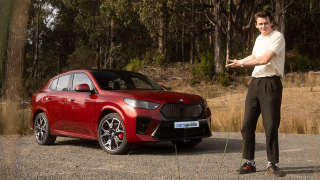
AC and DC charging explained: Everything you need to know about EV charging speeds

The introduction of any kind of new technology usually brings a whole host of new jargon to learn along with it, forcing consumers to wade through the initial deluge of fresh information with a sense of head-scratching confusion.
The ins and outs of petrol-powered vehicles are second nature to most drivers, but with the introduction of electric vehicles (EVs) there’s a whole new type of vehicle, and an entirely new operating system, for people to get their heads around.
One obvious area to grapple with is charging speeds, and the difference between AC and DC charging. Sadly, it’s not quite as obvious as the difference between diesel and petrol.
The simple version is that AC charging is slow and DC is fast, but there’s a bit more to it than that.
The two types of electricity an EV can use are Alternating Current (AC) and Direct Current (DC). What makes things a little tricky is that most power that comes from the electricity grid we’re all plugged into is AC, whereas batteries - like the one in your smartphone, or the one in your EV - can only store power as DC.
This is why a lot of devices have an AC to DC converter built-in to the plug. EVs have their own in-built convertor (or ‘onboard charger’, as they’re confusingly called) that changes AC power to DC and then transfers it to the EV’s battery.


Download the EVGuide Report, 2022
Australia's one-stop snapshot of all things relating to electric cars.
There are larger, faster chargers that convert the AC power to DC internally, meaning you can transfer the power directly to the EV’s battery, thus bypassing the vehicle’s in-built convertor.
Levels of charging
The easiest way to understand the different ways to charge your EV and the time it will take is to break charging down intro three levels.
Level one is AC trickle charging, where the EV is plugged into a standard 240-volt AC socket - the kind that you’ll find on the wall at home (and hopefully in your garage - if not, you’ll be needing yourself a lengthy extension cord).
While this is the easiest form of charging - these types of sockets are everywhere - it’s also the slowest. A typical 10-amp socket offers about 2.0kW of charging power, and the time it takes to give your EV’s battery a full charge from empty will depend on its size, but will almost always be slow. Like a couple of days slow.
A good rule of thumb: dividing your battery’s capacity by two should give you an approximate time that this method will take (e.g. an 80kW battery will take around 36-40 hours to charge).
Using a slightly more powerful 15-amp, 3.6kW socket should halve these times again, although it’s worth remembering that most charging is topping up, not replenishing a fully drained battery, so the likelihood you’ll be up for a 48-hour wait for a full charge is slim.
Level two is AC fast-charging, best exemplified by a wall-box charger that you can get installed at home.
These deliver 7.2kW with 240-volt AC single-phase power, reducing charging time considerably: a 13.8kW battery will only take a couple of hours to fully charge from empty, and a larger 80kW battery will fully charge after about 10 hours.
Wall-box chargers are often seen as a good option for Plug-in Hybrid Electric Vehicles (PHEVs), which have both an internal-combustion engine and an electric motor, because their smaller batteries take less time to charge.
While it’s important to note that a lot of EV batteries will only charge at a maximum of 7.6kW - most likely in PHEVs due to the aforementioned smaller batteries - there is an option to get a 22kW charger if you have 415-volt three-phase power at your disposal.
Level two AC fast-charging is also what you can typically expect to find at public charging stations. There are a number of apps that will help you locate charging stations and offer you detailed information on them, which is useful for finding out which ones offer 7.2kW and which have 22kW.
Level three is DC rapid-charging, offered via public 480-volt DC rapid-chargers that can deliver charging power starting at a very impressive 50kW.
These type of chargers are important in relation to drivers who have longer distances to travel and want relatively short charging times, although charging can be sped up further with certain ultra-rapid chargers that can deliver up to 350kW of power (kind of pointless, currently, since no EV can accept a 350kW charge, but they are effectively future proofing themselves for the battery tech that’s coming).
If you have a PHEV, keep in mind that they are not compatible with DC fast-chargers or ultra-rapid chargers - they only work with AC charging.
As for charging time, DC fast-chargers will match the kW the charger is delivering to kilometres for every 10 minutes charged, meaning 10 minutes at 50kW will give you 50km of range, 10 minutes at 175kW will give you 175km of range, and so on.
Again, your best friend here will be one of the many smartphone apps that will help you locate the appropriate charger for your type of vehicle, so long as you’re aware what the maximum charge your vehicle can handle is.
Good luck, and happy charging!











Comments